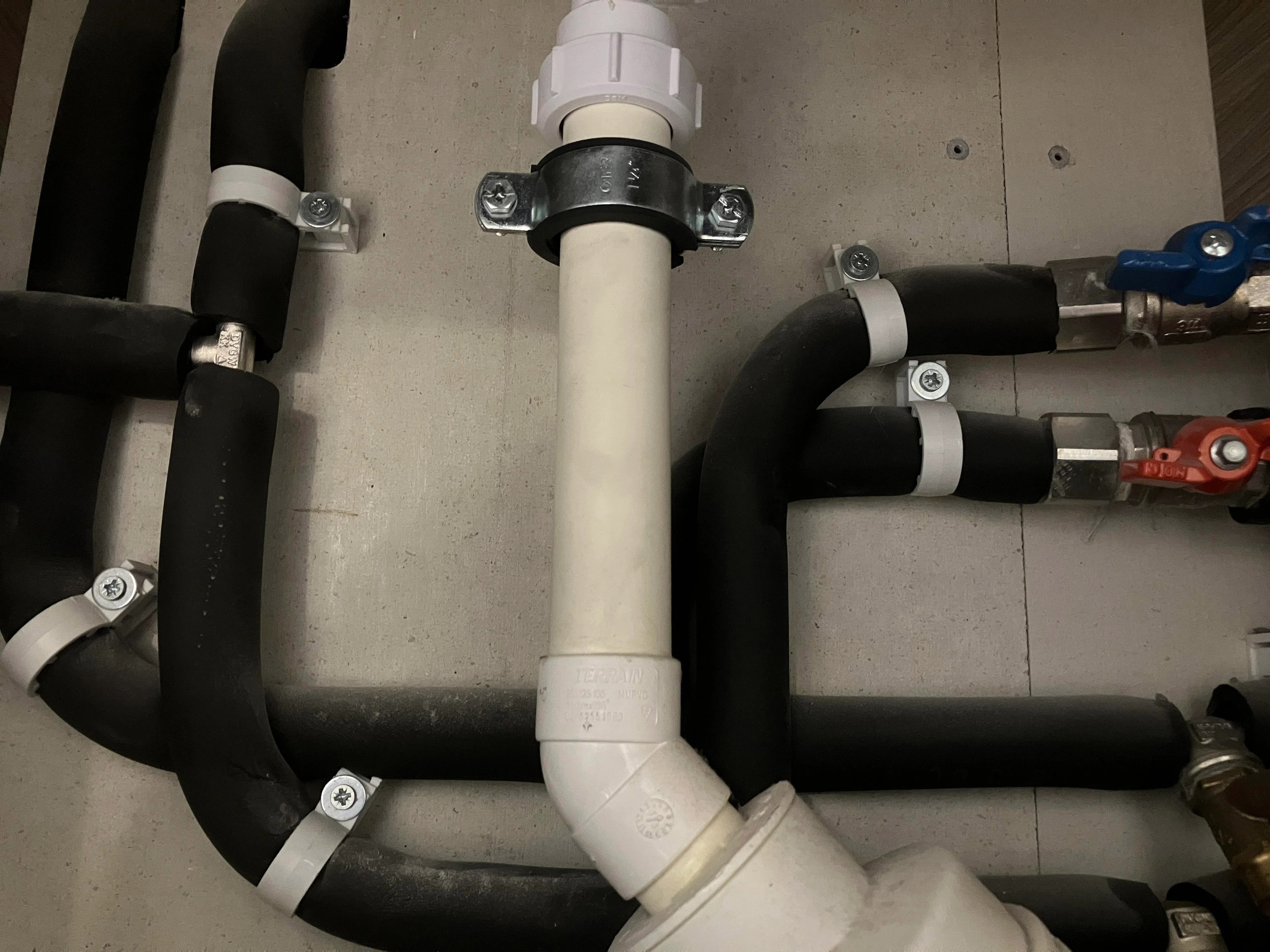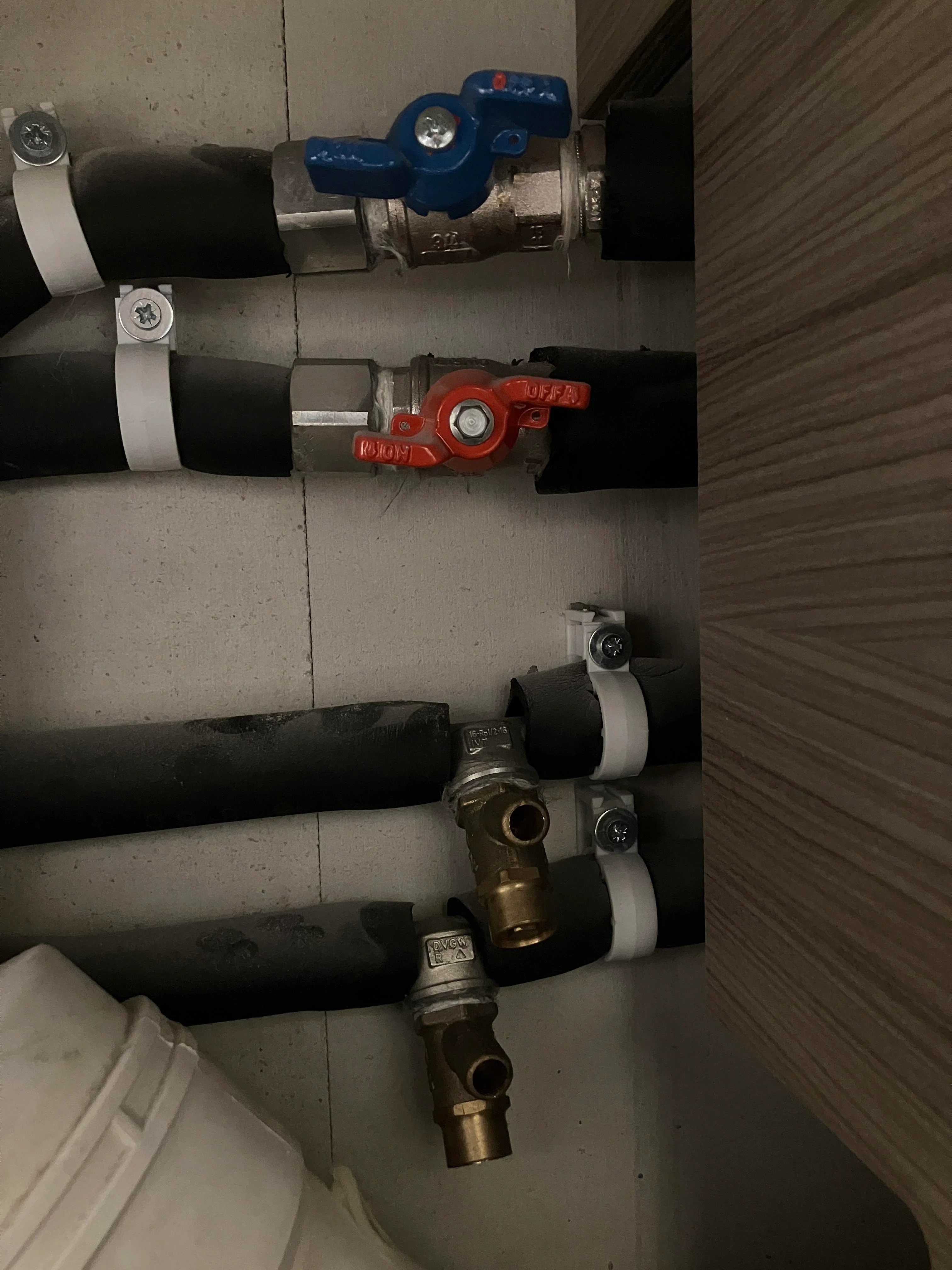I would like to install a bidet shower in my bathroom. I am used to DIY tasks, but I've never done any plumbing jobs. I am seeking help with how/where to install the 't' connectors required to connect the bidet to my existing pipes.
I have looked at the pipes, and I've found the following:
As you can see from the picture below, there is an existing connection between the cold water pipe and the WC tank.
I am sorry for being ignorant about this; I have also noticed some valves (?) on both the cold and hot water pipes going toward the bathtub (shown at the bottom of the picture below), and I was wondering what they are used for.
Based on the existing pipe arrangement above, can anybody suggest the best way to connect the bidet shower? I was thinking of purchasing one with a thermostatic valve that would, therefore, require both hot and cold water input and would produce as output a mixed water flow at the right temperature going into the shower bidet.



